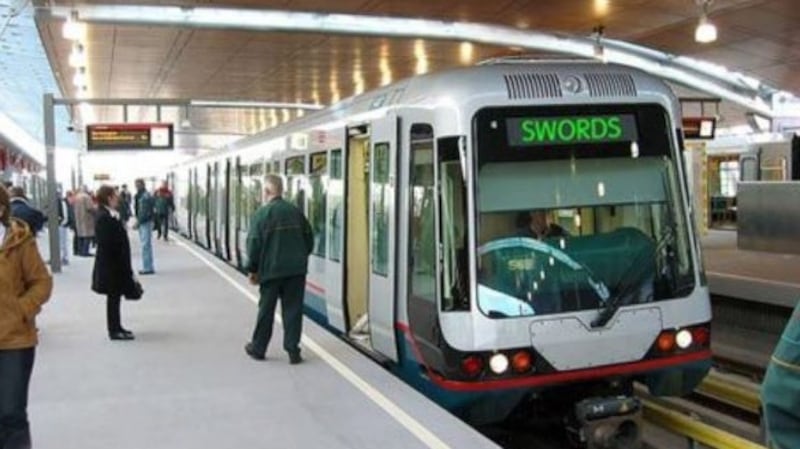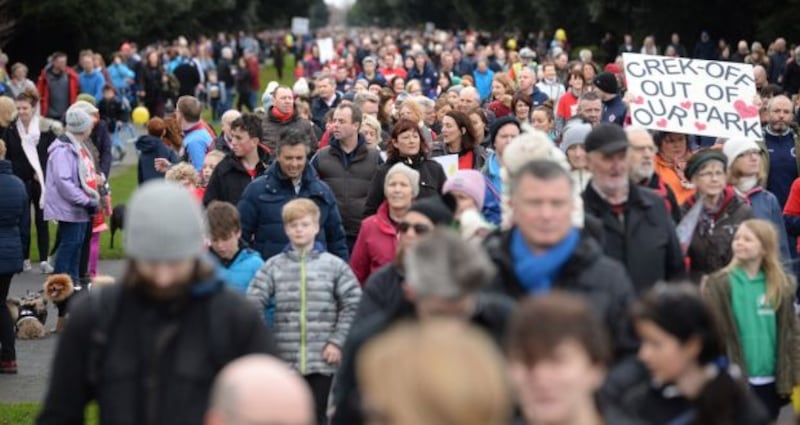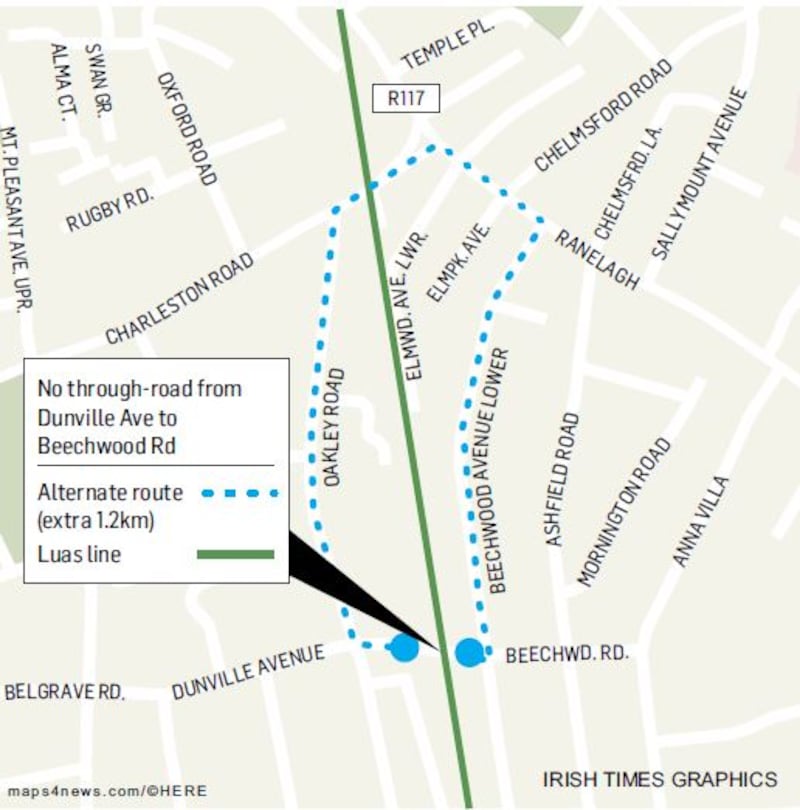Will the new Dublin bus corridor go through your front garden? Does the Metrolink threaten your home, or your kid’s GAA or soccer pitch?
Or are you concerned the placing of giant electricity pylons or a new wind turbine close to your house? The economics of this are simple enough - in theory - even if the practical execution is tricky.
As the State plans to invest well over €100 billion in new infrastructure developments in the years ahead, this issue will impact on more and more people.

Where money is invested should be determined by an analysis of the costs and benefits involved - with the better projects chosen for investment.
The disruption caused by a new project should be part of this calculation, even if this is not often the case. But if the project is worthwhile it should still go ahead, no matter who it upsets. In some cases, the losers should be compensated.
Economics provides a way to look at these decisions, but it does not always give the same result as local politics.
One key issue in Ireland is the length of time which projects can be delayed, generally through legal actions which - while added to planning - can draw out the planning process for years.
In turn these delays can lead to very significant losses to society as our infrastructure starts to creak.
Costs
One of the problems is that typically, the costs of new projects are imposed on a small group, ie local residents or businesses, while the benefits of projects are spread much more widely and over a long time period.
For these reasons it cannot be left to “the market” to work it this out.
If we build anything at all then someone is not going to be happy
The tricky bit is putting numbers on economic and social costs and benefits is difficult. And it can be particularly challenging to put a value on nuisance and disruption.
It may be reasonably straightforward if, for example, your field is bought to accommodate a new motorway - and this would typically be dealt with via a compulsory purchase process which has provision for compensation.
(There was a deal reached between the National Roads Authority and the IFA to allow for this during the period when the motorways were built. It provided for an additional fee on top of the market price per acre to be paid to the landowner)
But how do you put a cost on the noise or the constant flickering shadow from a wind turbine, or the health fears - whether groundless or not - from a high voltage pylon?
So, the question is how do is need for new large scale infrastructure balanced against the rights and concerns of those most affected?
Ubiquitous issue
"It is a pretty ubiquitous issue. If we build anything at all then someone is not going to be happy," says Edgar Morgenroth, economics professor at DCU. "If the benefits of the projects exceed the costs, then it is worth doing."
Part of the answer is, in some cases, to offer the “losers” compensation, as the total benefits mean the project is still worth doing.
This can happen in Ireland via the compulsory purchase order process, where landowners would be compensated, for example, for land they lose, the impact on the rest of their holdings and disturbance caused. This was part of the reason for the IFA deal with the NRA.
Compensation programmes for wider disruption to communities are less developed, though local authorities often oblige builders to put in social infrastructure as part of a development, in a bid to provide a direct benefit to the community.
Often when people oppose planning decisions, they look to the courts and take a judicial review.
Legal objections to the planning process in Ireland tend, Morgenroth points out, to have a “winner takes all” outcome. Either the project is allowed to go ahead, or not.

There are also other economic issues with the planning and particularly legal processes. Previously, objectors have sometimes included those with no vested interest of their own - in other words they would not themselves be financially affected, or suffer any loss from a development being near where they lived.
Rights of appeal
And a key issue is the delay and the rights of appeal which can drag project decisions out for years , imposing a very significant economic cost in itself.
The classic example of delay is the proposed - now abandoned - Apple data centre near Athenry, which was granted planning permission by An Bord Pleanála in August 2016, but was abandoned in May when the Supreme Court said it would hear an appeal against a High Court decision in relation to the case.
The State has tried to cut the delay, for example by seeking to speed up planning through classifying certain projects as “strategic infrastructure”, which means projects can skip local planning and go straight to An Bord Pleanála.
And it is also looking at new legislation to streamline the planning and associated legal processes.
But the strong Constitutional protection in Ireland for property ownership and the right of appeal to the courts still threatens long delays to aspects of the State’s new investment programme and for plans to speed the delivery of new housing development.
Another issue is that the planning process can be a minefield, even for experienced planners.
St Anne’s Park
Recently An Bord Pleanála admitted in court it had erred in granting planning permission for 500 houses adjacent to St Anne’s Park in Raheny on Dublin’s Northside.
This was because it had not undertaken a proper assessment under the EU Habitats Directive of the impact on the local bird population, particularly the “east Canadian high Arctic light-bellied Brent geese,” which winter in the area.

Here is a classic case where the economic benefit is clear, but the costs are hard to calculate. Locals do not want to lose a green space and then there is the issue of the local wildlife. Should this stop the development?
How do you balance the foraging rights of the Brent goose versus the need for housing? There is no “right” answer. But we need a basis to decide on these things - and reasonably quickly.
And ideally without having to troop off to the courts.
Options
While there is no perfect way, experts have pointed out a number of ways forward:
- At a national level, the public needs to understand why projects are happening and what are the economic, social and environmental reasons. The Government has a big job to do, for example, in selling its policy of denser development in city centres, where people would live in smaller units, closer to their work.
- The Government needs to deliver on its promises to streamline the planning and associated legal processes, particularly for major projects. These are designed to speed decisions and tighten up third party objection rights. Judicial reviews of planning decisions are also to be dealt with more speedily by the courts.
- The legal process for compulsory purchase of land can be complicated, with as many as 70 different procedures under Irish law according to a Law Reform Commission analysis. There is scope for reform and simplification. Trust in the planning authority is also vital.
-In terms of individual projects, studies show that there is a huge value to transparent communications with local groups, consultation and information sharing. Not doing this can set people against developments. Lack of such consultation was, for example, seen as an issue for Shell in the early stage of its attempts to bring gas onshore in Mayo. According to Morgenroth, international experience suggests that once people decide to oppose a project, their view can be hard to change.
- Findings about what actually leads people to support development vary. Internationally some research found communities can be more supportive when they have some kind of ownership of the infrastructure involved, or a role in running it.
Compensated
However, an ESRI study by Marie Hyland and Valentin Bertsch which looked at wind energy projects and associated grid infrastructure found, via a national survey "that acceptance of infrastructure development is highest when communities would be compensated via a community benefit scheme, involving cash transfers but no share in ownership or associated project risk."
In other words Irish people tended to be risk-averse and take a “show us the money” approach. Meanwhile more than 40 per cent would not be swung by compensation either way - in other words they were likely to either strongly support or oppose.
- People are compensated when their land is taken, but we do not have a history of more general compensation schemes. Traders upset by the cross-city Luas project, for example, did not get compensation.
And while a landowner will get compensation when a pylon is erected, their neighbours - affected, albeit to a lesser extent - do not. Morgenroth suggests that there may be a case for a national body to rule on such compensation issues in the case of major projects. The bet is that this would speed development while still safeguarding most of the gains of the project.
Local politics
Perhaps the biggest issue, however, is local politics. The route of the new Metrolink already looks likely to be altered to avoid disruption to the Na Fianna GAA club in Glasnevin on Dublin’s Northside.
There are already brewing disputes on the Southside route for the Metro, and on the new proposed new bus corridors which will take front gardens from hundreds of homeowners and the new planned bus routes.

The question is whether this opposition will be driven by economic and social logic, or by local political considerations.
If the latter, a lot of what we need to provide for Ireland’s projected population growth over the coming decades will simply never be built because the costs of these projects tend to be borne by groups in specific areas, while benefits accrue much more widely.
A final point is that some infrastructure projects can result in significant short term disruption to those immediately adjacent to the project but then a significant long-term benefit, as is the case with the Luas.
Next week Cliff Taylor examines why we are still paying so much for mortgages in Ireland compared to home owners in other EU countries?











